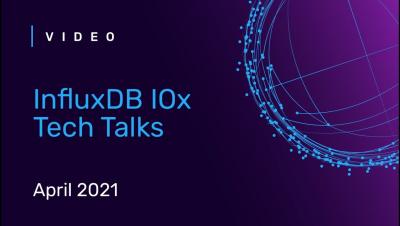Operations | Monitoring | ITSM | DevOps | Cloud
InfluxData
David Henthorn | Illuminating the Dark Data of Critical Infrastructure | InfluxDays EMEA 2021
InfluxDB Annotations
Deploying Services with Docker, NGINX, Route 53 & Let's Encrypt
Docker is a power tool for deploying applications or services, and there are numerous Docker orchestration tools available that can help to simplify the management of the deployed containers. But what if you are wanting to deploy a small number of services and not wanting to undertake setting up and managing another application stack just to run a handful of containers. I will cover how I deployed a handful of services on a single Docker host.
InfluxDB's Checks and Notifications System
InfluxDB 2.0’s Checks and Notifications system is likely the most powerful and flexible system available for creating alerts based on time series data. To get the most out of the system, it is helpful to understand the different pieces and how they fit together. After reading this article, you should be able to create precise alerting using the InfluxDB 2.0 User Interface (UI), as well as be able to extend and customize the system to suit your specific needs.
InfluxDB IOx Tech Talks: Replication, Durability and Subscriptions in InfluxDB IOx
How to Parse Your XML Data with Telegraf
In March, we released Telegraf 1.18, which included a wide range of new input and output plugins. One exciting new addition was an XML Parser Plugin that added support for another input data format to parse into InfluxDB metrics.
InfluxData releases InfluxDB Notebooks to enhance collaboration for teams working with time series data
SAN FRANCISCO — April 14, 2021 — InfluxData, creator of the leading time series database InfluxDB, today announced the general availability of InfluxDB Notebooks, a new capability that improves communication for software development teams, ultimately enhancing productivity within InfluxDB Cloud. InfluxDB Notebooks is the first of the company’s new capabilities designed to make it easier for developers to collaborate around time series data within the platform.
TL;DR InfluxDB Tech Tips: Configuring a Slack Notification with InfluxDB
With InfluxDB you can create notifications to make the most out of your alerts. Notifications enable you to send check statuses to the endpoint of your choice. In this TL;DR we set up a Slack Notification Rule and Endpoint through the InfluxDB UI.










